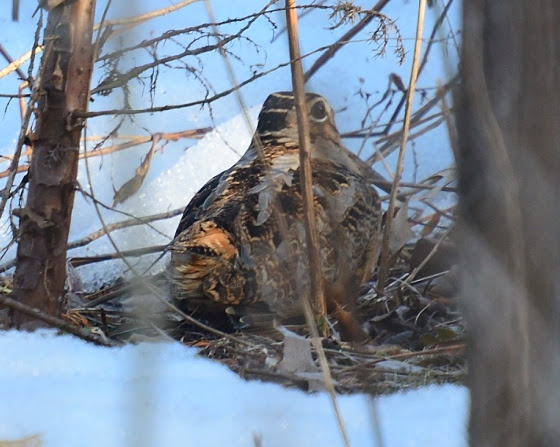Winter’s Off Ramp
Article and photos by Joe Mish

March is Winter’s off ramp, and each day, by attrition, the darkness of winter fights the increasing daylight to a standstill, but only for a moment. In a scripted celestial movement, called the vernal equinox, the earth curtseys to its stationary solar partner, to show respect for both ethereal combatants before allowing the light to dominate the darkness.
The ebb and flow of light is continuous and only by poetic license do the two stand opposed. They are really one entity, measured as day length based on sunrise and sunset. The stability of the change or, periodicity, of daylength is used by all life on earth as a reference to evolve physiologically and to predict future events.
The ability to recognize patterns and predict future outcome is the key to survival. From sporting events to weather, political campaigns and animal migration, prediction dominates everything we do and reflects our need to see the future to ensure our security and safety.
Daylength is one of a constellation of indicators which sound the call to action. Migration of birds and marine life are dramatic examples of long distance travel from wintering to breeding grounds. An osprey named ‘Lady’ traveled over six thousand miles, each year, for 24 years from Loch of the Lowes in Scotland to West Africa and back. Lady’s light receptor organs, which evolved from the generational exposure to seasonal light change, triggered chemical changes in her body to prompt her journey.



Shad and alewives were a major fishery on the Raritan River in early colonial times, their migration blocked by mills and dams, killed the local economy. As dams are removed the shad, along with juvenile striped bass from the Hudson canyon, follow their ancient migratory patterns up the Raritan River.


Native people in the arctic regions traditionally rely on the migrating wildfowl, like eider, for food. While the relationship between humans and migratory birds and animals is a long tradition, it has somewhat changed from a survival event to that of observing birds as a passive outdoor activity. Migratory flocks sometimes include species not native to the region, a great addition to a birders’ ‘life list’.
One dramatic migratory event witnessed in the spring, in New Jersey, is the exact timing of the red knot migration to the horseshoe crab spawn on Delaware bay.
A red knot is a sandpiper which migrates nine thousand miles from the tip of South America to the Arctic breeding grounds. The birds will fly for days without eating in anticipation of feasting on millions of horseshoe crab eggs produced when the crabs come ashore to spawn. An ancient relationship developed over the centuries, on which the survival of the red knot hangs by the thinnest of threads.
The change in daylength captured by the eye, acts on the pituitary and pineal glands to stimulate the sex organs, and begin the migration. One red knot was found to be 21 years old and theoretically made the nine thousand journey nineteen times for a grand total of 189 thousand miles!
Set aside a moment on March 20th, 2023 at 5:24 pm, to recognize the impact between the choreography of celestial bodies in space and the existence of life on earth. Be amazed at how life has adapted in a long moment of equilibrium in a universe marked by chaos and change.
Author Joe Mish has been running wild in New Jersey since childhood when he found ways to escape his mother’s watchful eyes. He continues to trek the swamps, rivers and thickets seeking to share, with the residents and visitors, all of the state’s natural beauty hidden within full view. To read more of his writing and view more of his gorgeous photographs visit Winter Bear Rising, his wordpress blog. Joe’s series “Nature on the Raritan, Hidden in Plain View” runs monthly as part of the LRWP “Voices of the Watershed” series. Writing and photos used with permission from the author. Contact jjmish57@msn.com.
